Kale is a cold-season crop, a member of the cabbage family, and a healthy leafy vegetable. It is the world’s most nutritious and popular vegetable, and its popularity in India is steadily increasing. Kale’s scientific name is Brassica oleracea. It belongs to the same genus of cabbage, broccoli, and cabbage but has no head. Kale has been the healthiest green of choice with all the nutrients and vitamins.
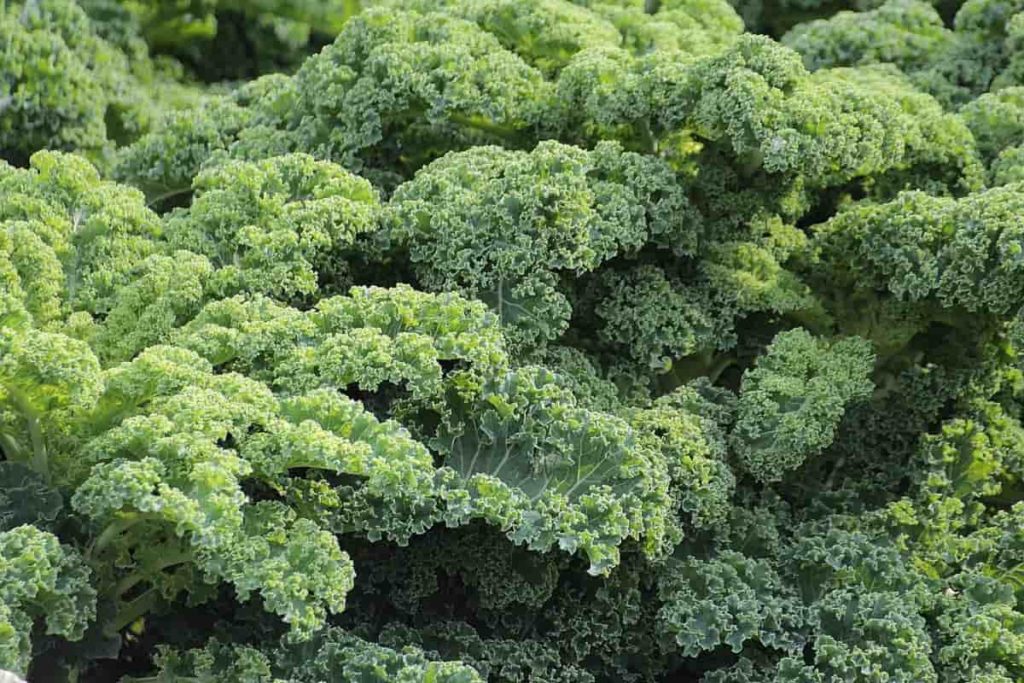
It steals the spotlight in rich green food marts and fancy kitchens. As well as being highly nutritious, Kale is attractive. Its decorative value can be appreciated in traditional garden beds or containers, especially in the fall. Kale plants can be ornamental, with textured and curly leaves that come in green, purple, and other shades. Kale has a fast growth rate and can grow from seed to harvest in about three months. Let’s check out the top 16 steps/ways/methods to boost Kale yield below.
Steps/ways/methods to boost Kale yield
Step 1: Select high yield Kale variety
There are many types of Kale, and they are all worth a try. Curly leaf varieties hang longer in cold weather. But flat-leaf types are usually formed quickly. Below are a few varieties:
- Hanover Salad is a fast-growing and early producer. It tastes good to eat raw in salads.
- ‘Lacinato’ is dense leaves so hard that they can be harvested even after snowfall.
- ‘Redbor’ variety has magenta leaves with curly edges. It has a light, crisp taste and texture.
- ‘Red Russian’ has smooth, soft leaves with purple veins and edges. It is the sweetest Kale variety.
- Vates is a dwarf, curly, blue-green Kale that tolerates heat and cold.
- Curly Kale is sweet and light and is one of the most common types of Kale. Its curly, wrinkled leaves mainly characterize it.
- Lacinato or Dino Kale also has a wrinkled texture, although its leaves are long and slender.
- Premier Nail is known for its cold hardiness and ability to grow fast.
- The Siberian Kale is one of the hardest varieties that can withstand extreme temperatures and can easily withstand pests.
Step 2: Choosing a planting site for more Kale production
Kale grows well in pots, garden soil, raised garden beds, and other containers. Kale can be grown indoors in pots as long as you have adequate light. Soil rich in organic matter and has good drainage is ideal, and the planting site should also receive plenty of sunlight. Make sure the nail is not near tall plants that will shade it. Kale growing in a window box can also be successful in the south- or west-facing windows, but in very hot climate conditions, east-facing windows can help prevent scorching from the afternoon sun.
Step 3: Soil requirement for more plant growth
Place seeds about ¼ to ½ inch deep. Avoid using potting soil and sow the Kale seeds in well-drained, loamy soil with a pH level between 5.6 and 6.8. It will help prevent clubroot, a common fungal disease in the cabbage family.
Step 4: Kale planting time for more yield
Kale tastes best when plants grow fast and mature before summer heat (temperatures rise above 24°C) or after a fall frost. Temperatures are as low as -4°C do not seriously injure young plants. Mature plants are very hardy and can withstand cold temperatures. However, hot temperatures will slow plant growth and cause a bitter taste.
In case you missed it: Growing Organic Kale – Tips, Ideas, Secrets
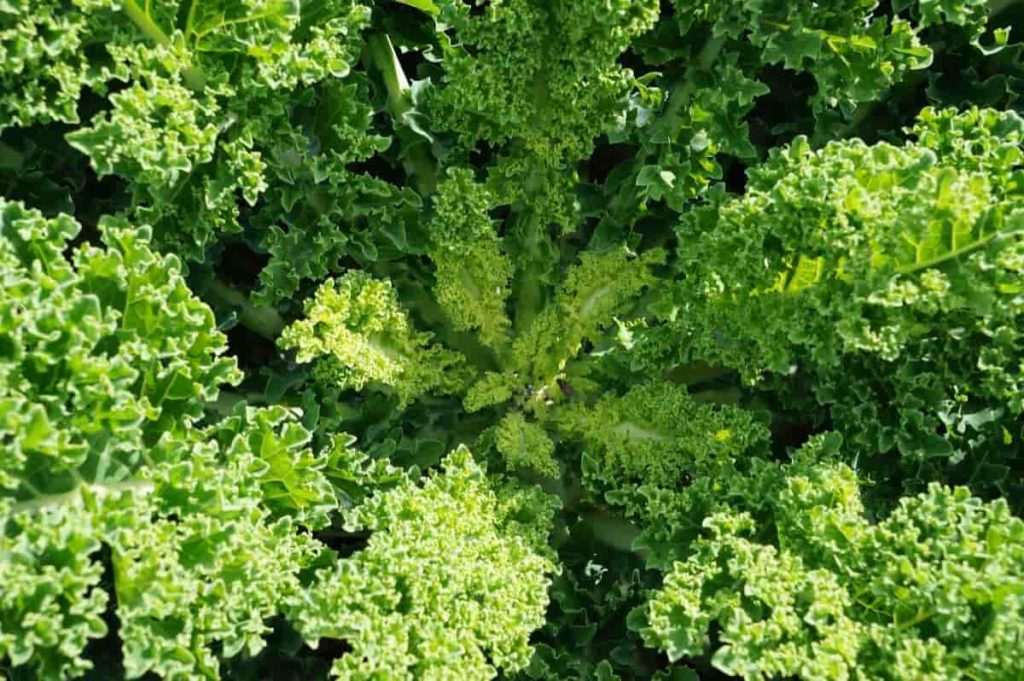
For Spring: Whether planting seeds directly in the ground or starting seedlings from a nursery, you can plant about 4 to 6 weeks before the average spring frost. Seeds will germinate at soil temperatures below 4°C.
For Fall: Choose early maturing cultivars and direct seed three months before the first fall frost date. You may need to delay sowing until temperatures cool in areas with hot summers. Cool fall weather conditions bring out Kale’s sweet, nutty flavor that can withstand severe frosts without suffering damage.
Kale plants can also be grown as a winter vegetable under cover or outdoors in mild winter regions, such as the Southwest, Pacific Northwest, and Southeast. They will grow and produce all winter.
Step 5: Tips for growing Kale in pots or containers
- Kale is very easy to grow in pots and containers. You don’t need an entire backyard to grow this powerful vegetable.
- Kale is easy to keep in pots. It stimulates the plant so that you can move it in proper sunlight and protect it from severe weather conditions as needed, but it also protects it from garden invaders, such as rabbits, which bite on the leaves. Also helps Also, container breeding is ideal if you do not have adequate garden space or soil conditions.
- Select a pot or container at least 12 inches in diameter. It should also have plenty of drainage holes. A non-shiny soil container is a good option as it allows excess soil moisture to pass out of its walls, helping to prevent roots from rotting. Use a standard pot mix; an organic mix for growing vegetables is a good option. Transplant Kale into the pot at the same depth as it was growing in your previous container, and water it after planting.
- Select a pot or container at least 12 inches deep and wide. Be sure to select the drainage vessels at the bottom. Fill 3/4 of the pots with dry clay.
Step 6: Kale growing methods for higher yield
There are two ways to grow Kale by seed. You can sow the seeds directly in the garden soil or start the seeds indoors in a seeding tray and transplant the plants into the soil later.
Direct sowing method
You need loose, well-drained soil to grow Kale. Make rows about 18 inches apart, and sow your Kale seeds directly to a depth of 0.5 cm. Cover Kale seeds with soil and water well so that the soil around the seeds can settle.
Thinning: Once the Kale seedlings emerge, thin them out at a distance of 18 inches. That is, remove the overgrown plants.
Transplantation method
Sow the seeds in a seed tray filled with a seed starting mixture such as an organic veggie mix. Sow 2 seeds in each cell. Transplant after 5-6 weeks. To plant, make a hole in the soil twice the size of a root ball. Place the root ball along the soil surface and backfill the soil.
Hardening: When you start your plants indoors, you slowly adapt them to the outside. Kale seedlings are hardened by exposure to as much sunlight as possible daily, eventually transplanting them into the soil.
In case you missed it: Kale Cultivation; Farming Practices; Care; Harvesting
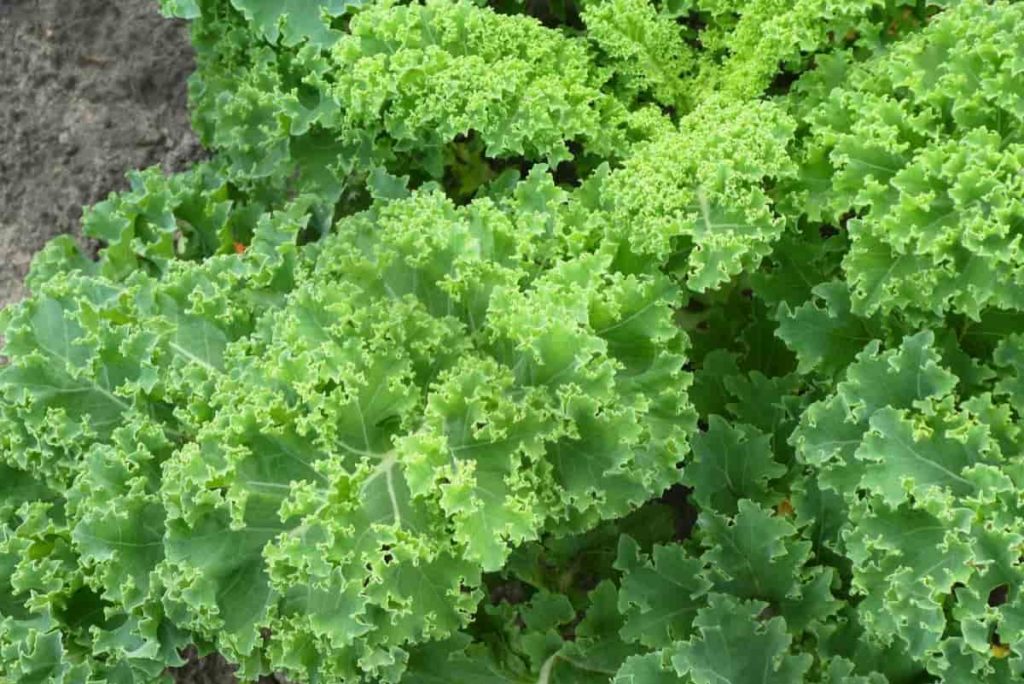
Step 7: Tips for starting Kale seeds
Although Kale is grown in hot weather, they tend to be woody and bitter. It is best to allow it to harden in cold weather. Start spring seeds should be started indoors about six weeks before the last frost to allow the plants to mature before the worst summer heat. Direct seeds will ripen in 55 to 75 days, while transplants will speed up the procedure, ready for harvest in approximately 30 to 40 days.
Replant your crop in the fall, six to eight weeks before the first expected frost – you can continue harvesting after the snowfall. Plant more Kale seeds or transplants every two to three weeks for long, continuous pruning. As well as being highly nutritious, the Kale is attractive, with a wonderful range of everything from bright green to deep purple, from raw leaves to waterfall beauty, and everything in between. Its decorative value can be appreciated in traditional garden beds or containers, especially in the fall.
Step 8: Propagating Kale for more production
Full sun and well-drained soil produce the fastest growing and softest leaves, although Kale will tolerate partial shade. Add plenty of compost to the soil carefully before planting. If your soil is not particularly rich, apply nitrogen-rich modifications (like blood meal, cottonseed meal, or composted manure) to the soil before planting. Kale is usually planted from seeds or nursery plants but can be propagated by cutting.
Kale grows again after cutting but requires a certain spread. To keep Kale healthy, cuttings from the oldest leaves should be taken. Use gardening scissors to cut the stem from the bottom of the plant; choose one with more than one leaf from the main stem (do not spread from the center of the plant).
Place the bottom of the stem in a small container without dirty soil in a pot mixed with drainage holes. Continue to increase the medium humidity. The roots should be ready in a few weeks. If you gently pull the stem and feel the resistance, you will know that the roots have formed. After that, it is ready for transplanting.
Step 9: Water requirement for staying plants healthy
Plenty of water will be required for the healthy growth of the crop. Please make sure you are not over water. Compost and grass clippings work well as mulch, such as shredded newspapers and stray. If you get rain every week or so, your Kale crop will recover on its own. If it doesn’t rain for a while, you need to water the plants yourself. A spray works well for large patches and requires only 10-15 minutes of running to moisten the soil sufficiently.
In case you missed it: Best Vegetables to Grow at Home in India: Easy for Pots, Terrace, Balcony, and Indoors
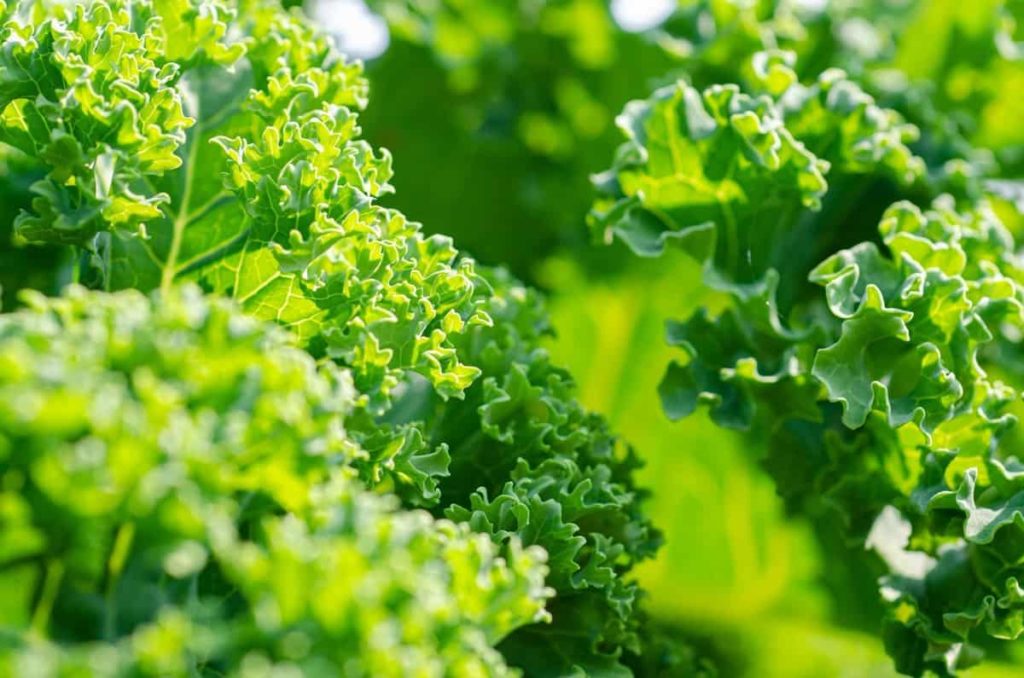
Step 10: Growing Kale in hydroponics for more production
Two basic hydroponics systems work best for vegetables like Kale. The first is DWC or deep-water culture, and the second is NFT or nutrient film technique. In DWC, you transplant seeds into rafts. These rafts then float on a built-in pond measuring 6-12 inches. The pond contains a large number of nutrients.
You add a water pump that helps circulate the water in the pond. However, you will need to install an air pump to ventilate the system. NFT is another hydroponics system where you transplant plants on shallow channels. In these channels, a thin film of nutrients is in circulation all the time. In hydroponics farming methods like NFT, you must tilt the channels at a certain angle, 1-4% away from the center. This design helps the channels drain at the ends to return to the reservoir.
The DWC system offers part of its benefits. But clear water is used. Not only that, but the system also avoids changes in the nutrient solution, electrical conductivity, and pH structure. The Kratky method is also gaining widespread popularity due to its ease and ease of installation. You can easily manage and control it. This method will provide all the benefits of a hydroponics system without hassle.
In this system, you place the Kale plants in nets that are an ideal source of growth. The plant roots are partially exposed to the wind while the lower part is submerged in deep water reservoirs. Your choice will depend on your suitability. To grow healthy Kale plants, you must maintain a temperature of between 16-24C on your hydroponics farm.
Step 11: Hydroponic requirements for better Kale plant growth
EC and pH range – Kale has a wide range of electrical conductivity. As such, it is less sensitive to EC changes. For optimal growth of Kale plants, EC should be approximately 1.6-2.5. The pH of the nutrient solution should be about 5.5-6.5 for better plant growth.
Lighting: You can choose an indoor hydroponics setup for artificial lighting conditions. Infrared light can increase plant yields. However, the combination of infrared and green can be amazing.
Spacing: Kale needs enough space to ensure all plant parts get enough light. That way, when you plant Kale, try to keep them half a foot or a foot away from each other. This technique will ensure that no plant stops receiving the light it needs for growth.
Step 12: Neighboring plants selection kale growth
Kale grows with other varieties of Cabbage, Beets, Onions, and other Herbs. The taste will be bitter if grown in a warm climate under shade.
Step 13: Tips for getting more yield in Kale farming
- If grown in the shade in a warm climate, the taste will be relatively bitter. Frost makes Kale sweet in taste.
- If your Kale leaves start to rot, add mulch after the crop is 6 inches long.
- Kale is good at resisting pests. However, pests affecting the crop include aphids, cabbage worms, cutworms, and flea beetles. As the weather progresses, keep adding organic fertilizer to the pots and picking dry leaves. It can help prevent pests and diseases.
- Kale roots run horizontally from the main stem. Use straw or grass mulch based on your plants to keep the soil cool, retain moisture and make it easier to feed the roots.
- Use bamboo sticks to support plant growth in pots during the winter. You can also grow Kale indoors as they do not require much space like most leafy vegetables. However, it needs a good amount of sun.
In case you missed it: Vegetable Planting Calendar in the USA: When to Plant, A Step-By-Step Guide for Beginners
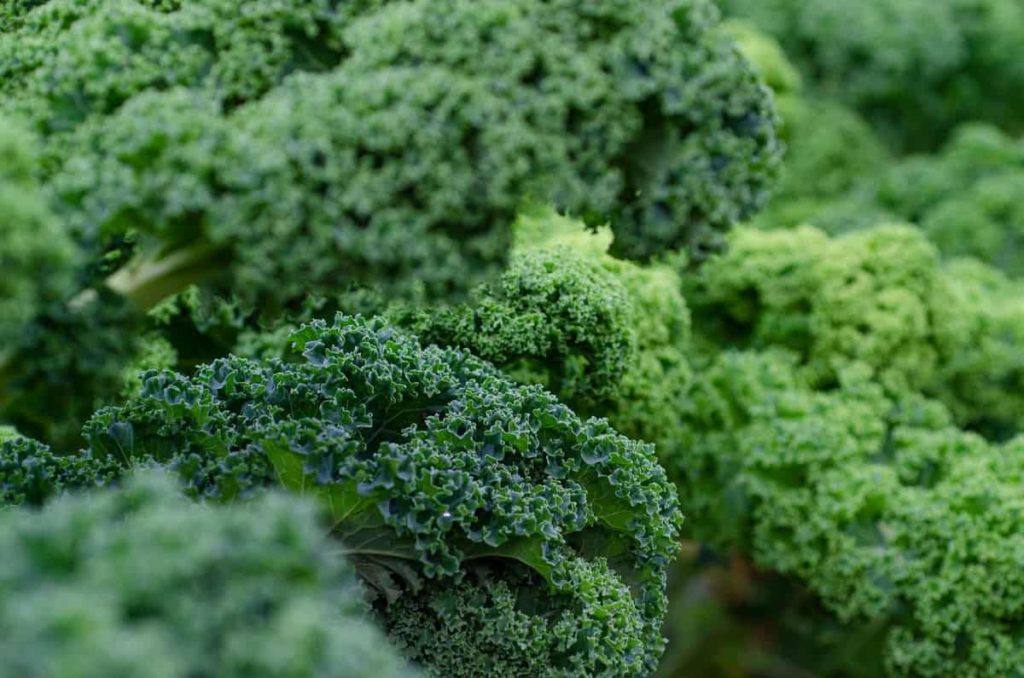
- Growing Kale indoors also reduces the chances of diseases and infections.
- The best type to sow indoors is the Dwarf Kale, as wide varieties can grow up to 3 feet tall. It is suited for indoor spaces.
- Keep pots or containers in a place with at least 8 hours of sunlight daily. Due to its ability to grow in water, Kale is grown easily in the hydroponics industry. It can be grown indoors under artificial light.
Step 14: Pest and diseases control for Kale plant growth
The Kale plant is a member of the cabbage family, notorious for attracting insects and rotting diseases. Kale is susceptible to black rot and club roots, as well as aphids, cabbage loopers, cabbage bugs, flea beetles, cutworms, and slugs. The best defense is to monitor the Kale plants for signs of eggs or feeding, such as holes in the leaves. Treat problems as they arise.
Rotating, cracked, yellow leaves can signify an aphid infection. Look at the underside of the leaves about the size of the pinheads for soft-bodied green, brown, or pink insects. Aphids can be hand-chewed or killed with organic insecticide soap. Ladybugs eat aphids.
Step 15: Leaves color change problems and control for growing Kale
Tiny holes in the leaves can be caused by cabbage loopers or cabbage worms, light green, yellow striped caterpillars. Hand-pick them or spray them with Bacillus thuringiensis. Skeleton leaves may be due to the Mexican bean beetle. The leaves chewed on the stem indicate the presence of vegetarians. Pyrethrum spray can control these pests. Pyrethrum is organic but toxic to bees – spray it in the evening when the pollinators are not active. Curly Kale may be less susceptible to beet damage than flat-leafed Kale.
Stagnant growth and cracked holes: If your plants look stagnant and you see cracked holes throughout the leaves, these could be cabbage loopers. Caterpillars are large, green caterpillars that later turn gray. Like the cabbage worms, the looper prevented with row covers or plucked off your kale plants and fed to your birds.
Both insects also respond well to the pesticide Bacillus thuringiensis (Bt). Bt is a bacterium that kills off insects that feed on leaves. It is considered safe for bees and other animals, as well as for humans and other animals.
Weak Plants and Yellow Leaves: Cabbage aphids are particularly problematic for Kale. These woolly, grayish-green creatures suck the juices out of Kale and another brassica. The results are yellow leaves, or they may be yellow as a whole, and the plant may be weak and dull. Once you know how to handle the problems, aphids are an easy bug to control. Mix a little insecticide soap or treat with neem oil to keep aphids away.
The kale leaves are turning white – Some gardeners have problems with Kale leaves that turn white. One possible reason is that the white leaf spots on your plants are caused by Cercospora or Cercosporella spp. The white leaf spot causes small circles (0.635 cm to 1.27 cm) on the tops of Kale leaves. You can also see your leaves turning yellow, withering, and even withering on the stalk. Protect your plants using a safe fungicide or copper spray. And water your plant under the leaves instead of above.
In case you missed it: Growing Vegetables in Clay Soil: Plants, Crops, and Amending Tips
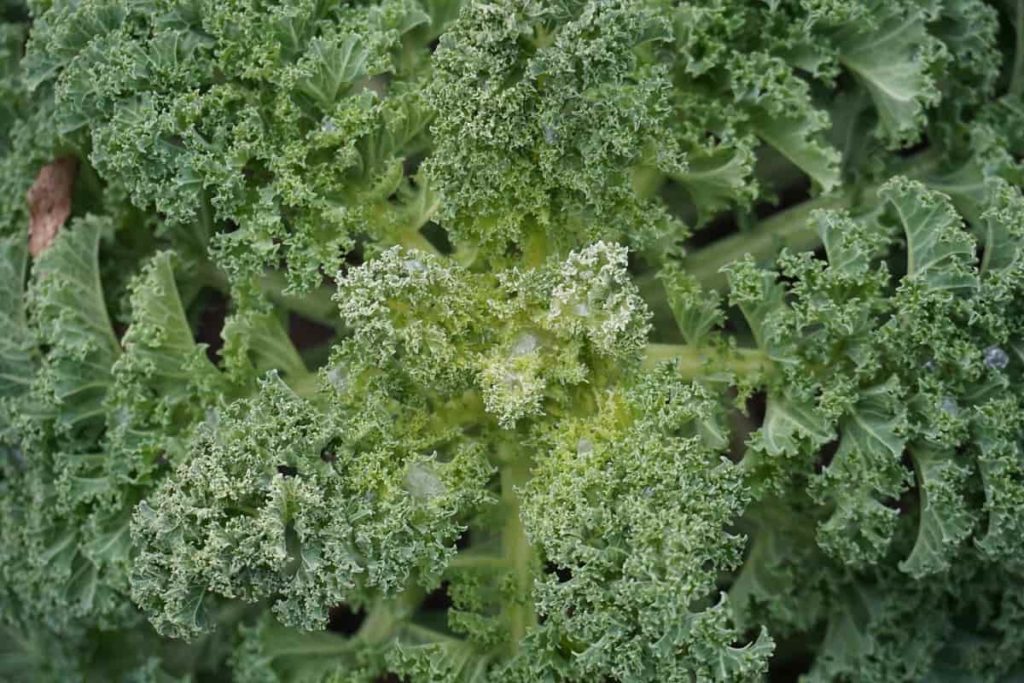
Step 16: Harvesting tips for more Kale yield
It is the time of pruning when the leaves will be the size of your hand. Choose one by one, starting with the lowest, outermost leaves and working towards the center. Always leave a few small central leaves attached to encourage growth. You can replant the same plant in five to seven days.
Expect to wait about two months for your Kale plant seeds to mature. Check the maturity days on your seed packets or plant labels for more accurate timing. Spring planted Kale is good for harvesting in the summer, but they are especially delicious after a mild cold. You can cut the young kale leaves for fresh use in salads or let your plants mature for use as cooked greens. Remove old outer leaves, and allow the plant’s center to continue producing. Kale will be refrigerated for about a week, ideally in crisper drawers.
- Economical Aquaculture: A Guide to Low-Budget Fish Farming
- 15 Common Planting Errors That Can Doom Your Fruit Trees
- How to Make Houseplants Bushy: Effective Tips and Ideas
- Innovative Strategies for Boosting Coconut Pollination and Yield
- Pollination Strategies for Maximum Pumpkin Yield
- The Complete Guide to Chicken Fattening: Strategies for Maximum Growth
- Natural Solutions for Tulip Problems: 100% Effective Remedies for Leaf and Bulb-Related Issues
- Revolutionizing Citrus Preservation: Towards a Healthier, Greener Future
- Natural Solutions for Peony Leaf and Flower Problems: 100% Effective Remedies
- Maximizing Profits with Avocado Contract Farming in India: A Comprehensive Guide
- Natural Solutions for Hydrangea Problems: 100% Effective Remedies for Leaf and Flowers
- The Ultimate Guide to Choosing the Perfect Foliage Friend: Bringing Life Indoors
- From Sunlight to Sustainability: 15 Ways to Use Solar Technology in Agriculture
- The Ultimate Guide to Dong Tao Chicken: Exploring from History to Raising
- The Eco-Friendly Makeover: How to Convert Your Unused Swimming Pool into a Fish Pond
- Mastering the Art of Delaware Chicken Farming: Essentials for Healthy Backyard Flocks
- 20 Best Homemade Fertilizers for Money Plant: DIY Recipes and Application Methods
- How to Craft a Comprehensive Free-Range Chicken Farming Business Plan
- Brighten Your Flock: Raising Easter Egger Chickens for Beauty and Bounty
- How to Optimize Your Poultry Egg Farm Business Plan with These Strategies
- Subsidy for Spirulina Cultivation: How Indian Government Schemes Encouraging Spirulina Farmers
- Ultimate Guide to Raising Dominique Chickens: Breeding, Feeding, Egg-Production, and Care
- Mastering the Art of Raising Jersey Giant Chickens: Care, Feeding, and More
- Ultimate Guide to Raising Legbar Chickens: Breeding, Farming Practices, Diet, Egg-Production
- How to Raise Welsummer Chickens: A Comprehensive Guide for Beginners
- How to Protect Indoor Plants in Winter: A Comprehensive Guide
- Ultimate Guide to Grow Bag Gardening: Tips, Tricks, and Planting Ideas for Urban Gardeners
- Guide to Lotus Cultivation: How to Propagate, Plant, Grow, Care, Cost, and Profit
- Agriculture Drone Subsidy Scheme: Government Kisan Subsidy, License, and How to Apply Online
- Ultimate Guide to Raising Araucana Chickens: Breed Profile, Farming Economics, Diet, and Care
- Bringing Hydroponics to Classroom: Importance, Benefits of Learning for School Students
- Ultimate Guide to Raising Polish Chickens: Breed Profile, Farming Economics, Diet, and Care
- Ultimate Guide to Raising Australorp Chickens: Profile, Farming Economics, Egg Production, Diet, and Care
- Silkie Chicken Farming: Raising Practices, Varieties, Egg Production, Diet, and Care
- Sussex Chicken Farming: Raising Practices, Varieties, Egg Production, Diet and Care
- Homemade Feed Formulations for Livestock: Discover Cost-effective Starter to Finisher Feed Recipes